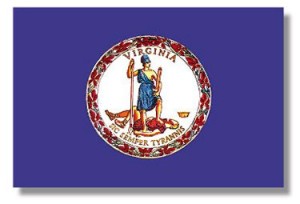
Best Lawyers in America Adds Definition of Qui Tam Practice
I am happy to announce that the publication Best Lawyers in America has added a definition of Qui Tam practice by yours truly.
I was happy to add my two cents on the topic for at least two reasons. For one thing, Best Lawyers is the oldest and most highly-respected peer review guide to the legal profession worldwide, and it is an honor to be included in its pages. Prior to my little blurb being added, there was no definition of qui tam litigation in the Best Lawyers publication.
The second reason is a little more abstract. In my humble opinion, it is always a bit of a struggle to label a law practice focusing on state and federal false claims acts. Some people like to call it “whistleblower practice,” and I suppose that name kind of fits — in fact, one can find the term whistleblower used in this blog from time to time.
The problem with the term “whistleblower” is that it also includes a number of things that are a bit far afield from qui tam practice. As just one example, American patriot and super-sleuth Harry Markpolous has been called a whistleblower — with much justification — for his work catching fraudster Bernie Madoff. That case had nothing to do with qui tam practice however.
As long as I am rambling here, I might was well say a few words about the etymology of the term “whistleblower.” According to my Merriam Webster dictionary, the term dates from 1970 and refers to “One who reports something covert or informs against another.” Google Books has an interesting chart showing the use of this term, which seems to corroborate the definition found in Merriam Webster.
By the way, Wikipedia has an excellent List of Whistleblowers which shows that the concept of really is — the article lists Samuel Shaw as the first whistleblower for his efforts to expose the torture of British POWs during the Revolutionary War.
The Difference Between Whistleblowers and Qui Tam Relators
Perhaps the best way to put it is like this — all qui tam relators may be whistleblowers, but not all whistleblowers are qui tam relators. As the articles found in Wikipedia and elsewhere make clear, the term whistleblower is very broad and includes many people who have no financial motivation whatsoever.
The representation of qui tam relators therefore differs from the representation of general whistleblowers because qui tam relators act pursuant to statutes like the federal False Claims Act and the Virginia Fraud Against Taxpayers Act which assign relators part of the government’s claim; that is to say, these statutes provide incentives for individuals with first-hand, non-public information about fraud on government entities to come forward, hire private counsel, and prosecute cases in conjunction with federal and state law enforcement authorities.
By creating incentives for individuals with first-hand information to hire private counsel and prosecute lawsuits in conjunction with the Department of Justice, the statute creates a true public-private partnership between individuals with knowledge of fraud, private practice lawyers specializing qui tam litigation, and federal prosecutors. The public private partnership created by the FCA has been an unparalleled success; since 1986 more than $40 billion has been recovered, and qui tam whistleblowers have received hundreds of millions of dollars for their efforts.
Such recoveries are by no means easy or quick. In addition to understanding the complex needs of modern government and the commercial entities servicing those needs, qui tam litigation has a number of unusual requirements not found in other types of federal civil litigation. Those requirements – many of which are jurisdictional – include a pre-filing disclosure memorandum, a heightened pleading standard for the Complaint, and a number of unusual procedural hurdles such as filing the Complaint under seal.
So, a special thank you to Best Lawyers in America for asking me to write a summary of qui tam practice…and as always, dear reader, a special thank you to you for reading this blog!